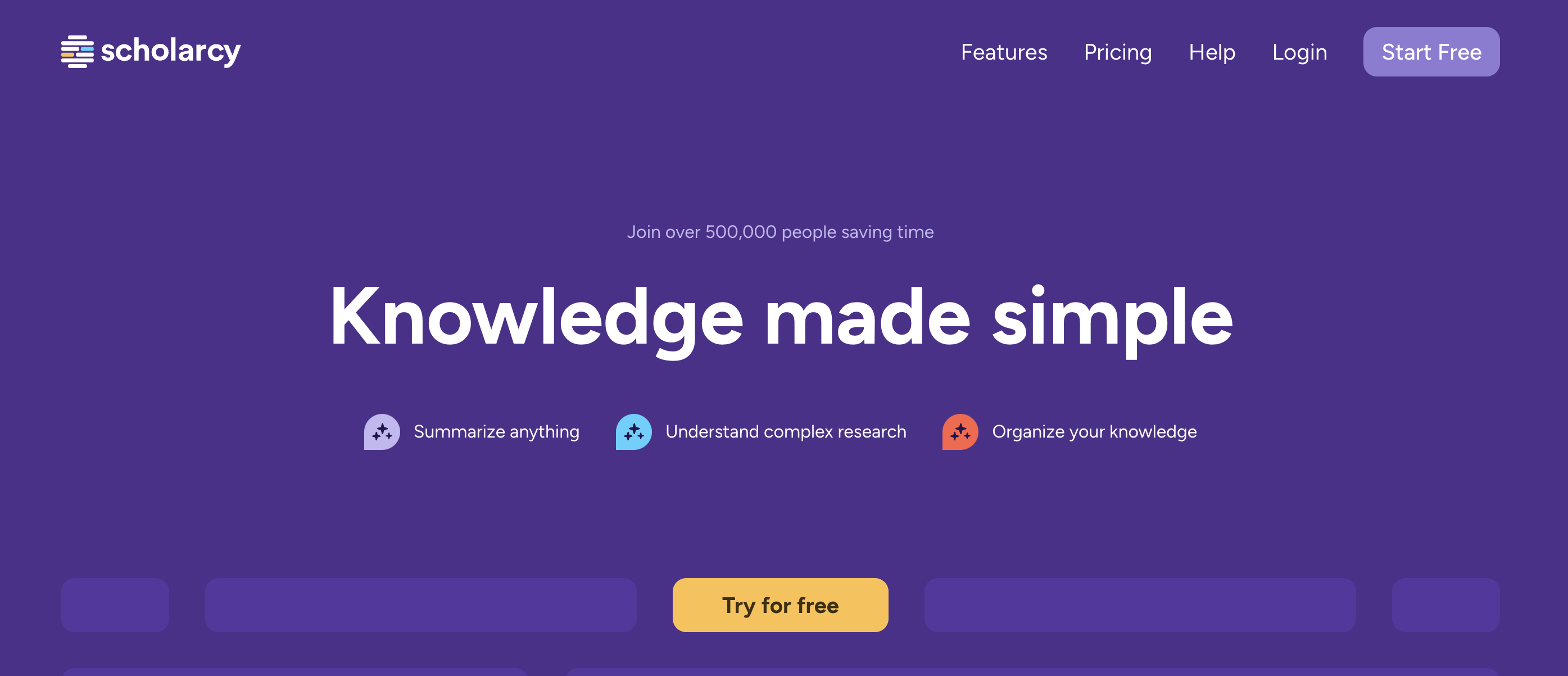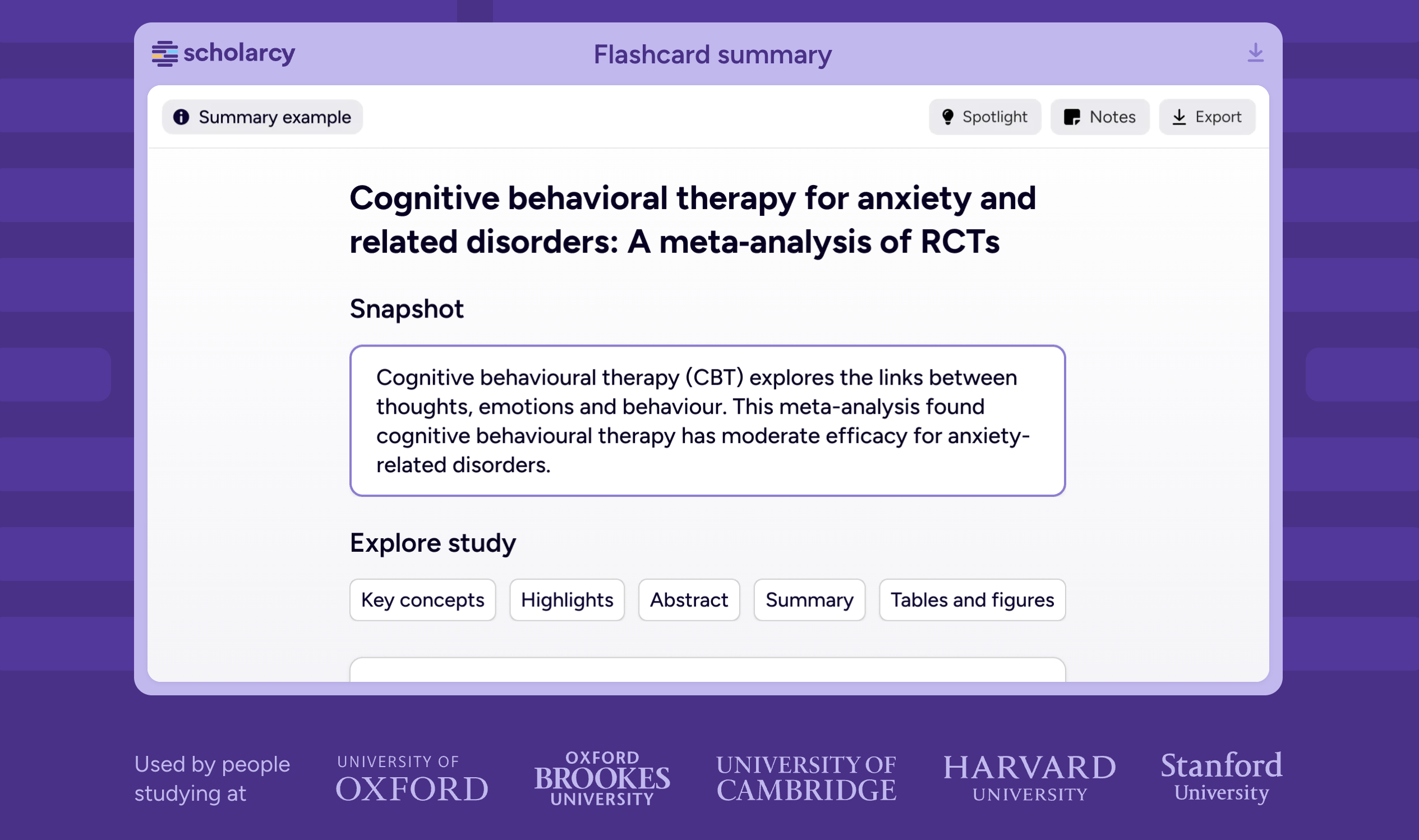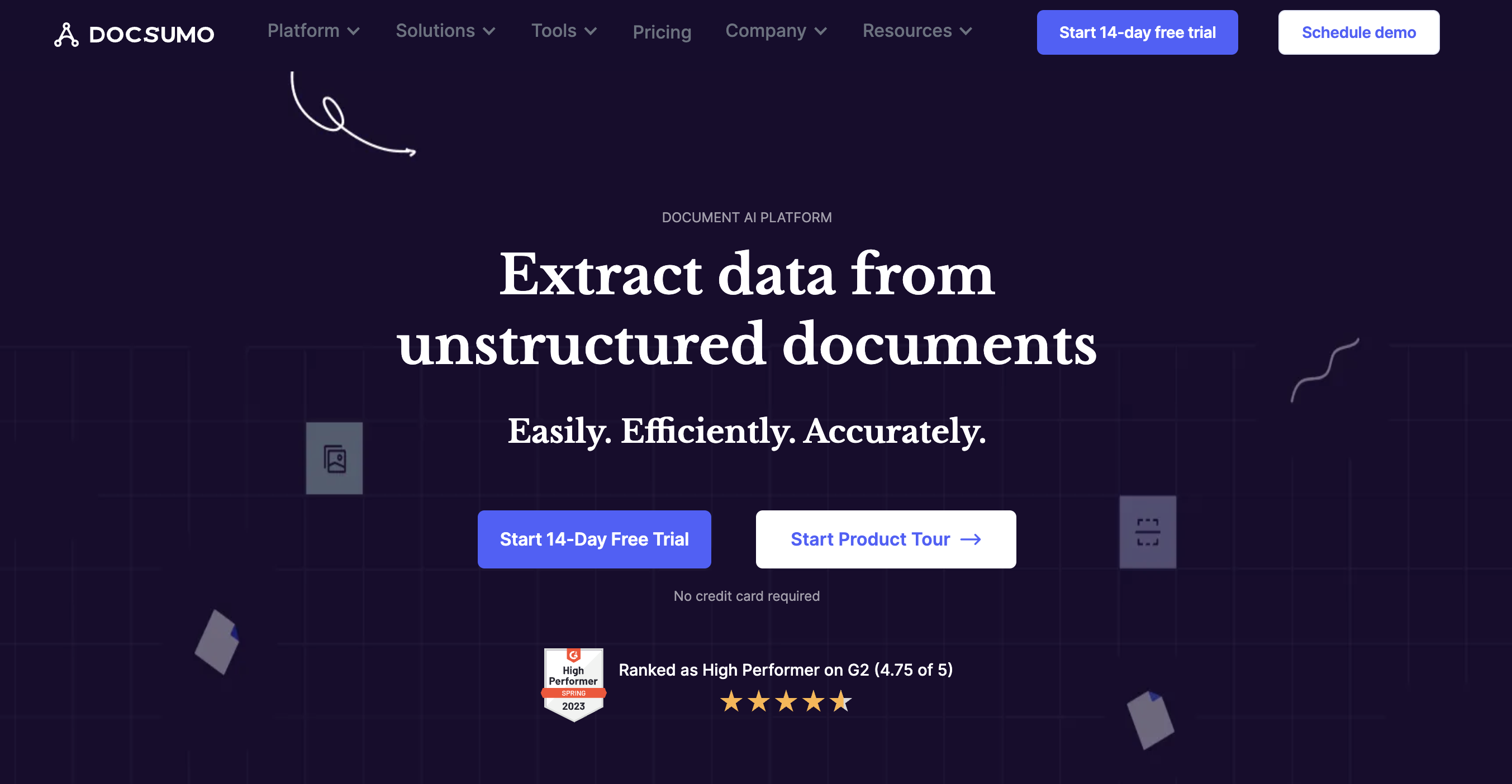Feeling overwhelmed by the ever-increasing mountain of academic research? Struggling to keep pace with the latest findings in your field? You’re not alone. Enter Scholarcy, an AI-powered summarization tool that promises to condense lengthy articles into easily digestible bites. But can Scholarcy truly live up to its claims? In this comprehensive 2024 review, we’ll dissect Scholarcy’s features, explore its strengths and weaknesses, and help you decide if it’s the key to unlocking your research efficiency.
Introduction
The ever-expanding ocean of academic research is a constant challenge for students and researchers alike. Keeping pace with the latest findings in your field can feel like trying to drink from a fire hose. That’s where AI-powered summarization tools come in, promising to condense lengthy articles into clear and concise summaries. One such tool is Scholarcy. In this in-depth 2024 review, we’ll take a deep dive into Scholarcy, analyzing its features, effectiveness, and value proposition to help you decide if it’s the right tool to streamline your research workflow.
What is Scholarcy?

Scholarcy is your research wingman, an AI-powered tool that tackles the time-consuming task of summarizing scholarly articles, reports, and even book chapters. It acts like a super-powered highlighter, automatically extracting the key points and condensing them into clear, concise summaries. But Scholarcy goes beyond simple summaries. It offers features like section-specific summaries, allowing you to focus on the introduction, methodology, or results. Additionally, Scholarcy generates interactive flashcards to help you retain information and integrates with open-access repositories, making it easier to find the full text of relevant articles.
Using Scholarcy: A User-Friendly Research Assistant

Scholarcy boasts a user-friendly interface that makes research summarization a breeze. Here’s how it works:
1. Uploading Documents:
There are two convenient ways to upload documents to Scholarcy. You can either drag and drop your PDF file directly onto the Scholarcy web app [insert screenshot of Scholarcy web app upload area] or use the browser extension. Popular browsers like Chrome and Firefox offer Scholarcy extensions that allow you to summarize articles directly from your search results with a single click.
2. Generating Summaries:
Once your document is uploaded, Scholarcy takes over. Simply click the “Summarize” button, and within seconds, you’ll have a concise summary at your fingertips. Scholarcy offers different summary lengths to suit your needs, allowing you to choose from a quick overview or a more detailed analysis.
3. Accessing Features:
Scholarcy goes beyond just summaries. By clicking on the different sections of the document (introduction, methodology, results, etc.), you can generate summaries specific to each part. This allows you to delve deeper into areas of particular interest. Additionally, Scholarcy offers a flashcard feature that automatically creates flashcards from key points in the summary, aiding in knowledge retention.
Supported Platforms:
Scholarcy offers flexibility, accessible through both the web app and browser extensions. This allows you to seamlessly integrate Scholarcy into your research workflow, whether you’re working on your desktop computer or browsing articles online.
Deep dive into Scholarcy’s functionalities:

Scholarcy packs a punch with features designed to streamline your research process. Let’s dissect its functionalities and see how they stack up:
1. Summarization Quality:
- Accuracy: Scholarcy generally delivers accurate summaries, particularly for well-structured and factual research articles. However, some users with experience in complex or niche fields report occasional inaccuracies.
- Level of Detail: Scholarcy offers customization options. You can choose between concise summaries ideal for quick overviews or more detailed summaries capturing a broader range of information.
- Customization Options: Users praise Scholarcy’s ability to adjust the summary length and highlight key points. One student says, “Scholarcy lets me control the level of detail, which is perfect for getting a quick grasp of an article before diving deeper.”
2. Flashcard Summaries:
- Effectiveness: Scholarcy’s flashcard feature automatically generates flashcards from key points in the summary. This can be a valuable tool for reinforcing knowledge retention, especially for students preparing for exams.
- User Testimonials: A researcher mentions, “The flashcards are a game-changer for me. They help me solidify key concepts from research papers much faster.” However, some users might prefer a more customizable flashcard experience with the ability to add their own notes.
3. Scholarcy Library (if applicable):
- Organization & Accessibility: Scholarcy Library (potentially a paid feature) allows you to organize your saved summaries and access them easily. This can be helpful for researchers who need to refer back to multiple articles. However, information regarding organization options and accessibility within the library might be limited depending on the pricing plan.
- Paid Subscription Details: Investigate Scholarcy’s pricing structure to understand the features included with the free plan and the additional benefits offered by the Scholarly Library (if it requires a paid subscription).
4. Integration with Open-Access Repositories:
- Convenience: Scholarcy can integrate with open-access repositories, making it easier to find the full text of relevant articles. This saves time and streamlines the research process.
- User Testimonials: Students appreciate how Scholarcy simplifies access to full articles. A user comments, “Scholarcy often links me directly to the open-access version of the article, which saves me a ton of time searching.”
Remember, Scholarcy is a tool to aid research, not a replacement for critical reading.
Scholarcy vs Competitors
Scholarcy isn’t the only contender in the AI summarization ring. Let’s see how it compares to other popular tools:
DocuSumo

- Similar to Scholarcy, DocuSumo tackles scholarly articles and research papers. It boasts a user-friendly interface and offers different summarization lengths. However, DocuSumo might lack the specific section-based summaries and flashcard generation features that Scholarcy provides.
ScreenApp

- While Scholarcy focuses on text, ScreenApp emerges as a strong contender for video-based research. If your research involves video lectures or conferences, ScreenApp’s built-in video summarizer can be a game-changer. It automatically identifies key moments, generates transcripts, and even allows you to create shareable video summaries.
Scholarcy’s Strengths:
- Focus on Scholarly Content: Tailored towards academic articles and research papers, Scholarcy understands the specific structure and terminology used in this domain.
- Section-Specific Summaries & Flashcards: These features cater to researchers who need to delve deeper into specific sections of a paper or want to solidify knowledge retention.
Scholarcy’s Weaknesses:
- Limited to Text-Based Content: If your research heavily involves video lectures, Scholarcy might not be the most suitable tool. Consider ScreenApp for such scenarios.
- Accuracy in Niche Fields: While generally accurate, Scholarcy might have occasional shortcomings in highly specialized or complex research areas.
While Scholarcy excels at text summarization, sometimes you might encounter research presented in video lectures or conferences. For those situations, consider ScreenApp, a versatile tool with a powerful built-in video summarizer. Imagine Scholarcy’s functionality applied to video content – ScreenApp automatically identifies key moments, generates transcripts, and even lets you create shareable video summaries. If you find Scholarcy valuable for research efficiency, then ScreenApp’s video summarizer might be the perfect complement for your multimedia learning needs.
Ultimately, the best tool depends on your specific research needs. If you primarily deal with text-based scholarly articles and value features like section-specific summaries and flashcards, Scholarcy might be your perfect match. However, if video lectures and presentations are part of your research mix, then consider exploring a tool like ScreenApp that can handle both text and video content.
Scholarcy’s Limitations: A Reality Check
While Scholarcy presents itself as a powerful research companion, it’s important to acknowledge its limitations:
- Accuracy Nuances: As impressive as Scholarcy’s AI is, it’s not perfect. Some users report occasional inaccuracies, particularly when dealing with complex or niche research areas where language can be highly specialized.
- Missing Advanced Features: Scholarcy might lack some features that power users might desire. For example, it doesn’t offer direct export functionalities to integrate summaries into your own work or a plagiarism checker to ensure your writing remains original.
- Critical Thinking Matters: Remember, Scholarcy is a summarization tool, not a magic bullet. It can’t replace critical reading and analysis. It’s crucial to use Scholarcy’s summaries as a starting point, then delve deeper into the full article to grasp the nuances and complexities of the research.
Think of Scholarcy as a time-saving assistant, not a substitute for your own intellectual engagement. By understanding its limitations, you can leverage Scholarcy’s strengths to become a more efficient and effective researcher.
Conclusion
The ever-growing mountain of academic research can be daunting. Scholarcy steps in as a potential solution, offering AI-powered summaries of scholarly articles, reports, and book chapters.
Key Takeaways:
- Scholarcy excels at generating clear and concise summaries, with customization options for detail level.
- Flashcards derived from key points can be a valuable tool for knowledge retention.
- Integration with open-access repositories streamlines finding full-text articles.
Who Benefits Most?
- Students overwhelmed by reading loads can leverage Scholarcy to grasp key concepts quickly.
- Researchers can utilize Scholarcy to efficiently scan numerous articles and identify relevant ones.
So, is Scholarcy worth using in 2024? Absolutely! But remember its limitations. Accuracy might falter in complex fields, and advanced features like export or plagiarism checking are absent. Scholarcy is a time-saving assistant, not a replacement for critical reading.
Ultimately, Scholarcy can be a valuable addition to your research toolkit, helping you navigate the vast ocean of academic knowledge more efficiently.
Frequently Asked Questions (FAQ) about Scholarcy
1. Is Scholarcy safe to use?
Scholarcy claims to use end-to-end encryption to protect your data. They do not store the full text of uploaded PDFs, only the extracted key information. It’s always wise to consult Scholarcy’s privacy policy for the latest details on their security practices.
2. Does Scholarcy offer customer support?
Scholarcy offers customer support options, though the specifics might depend on your subscription plan. They typically have a Help Center with FAQs and user guides. Additionally, some plans might offer email or chat support options.
3. Can I upload paywalled articles to Scholarcy?
As long as you have legal access to a paywalled article (e.g., through your university library subscription), you can upload it to Scholarcy. Scholarcy is a summarization tool, not a content distribution service. They do not store the full PDF after generating the summary.
4. Does Scholarcy have a free plan?
Yes, Scholarcy often offers a free plan with basic functionalities. However, features like Scholarcy Library (for organizing summaries) or more advanced summarization options might be reserved for paid subscriptions.
5. What are the alternatives to Scholarcy?
Some popular alternatives include DocuSumo, which focuses on summarizing research papers, and ScreenApp, which offers video summarization functionalities in addition to text.






